Thursday 14th November 2019
Stamford Students explore Iceland’s geographical spectacles
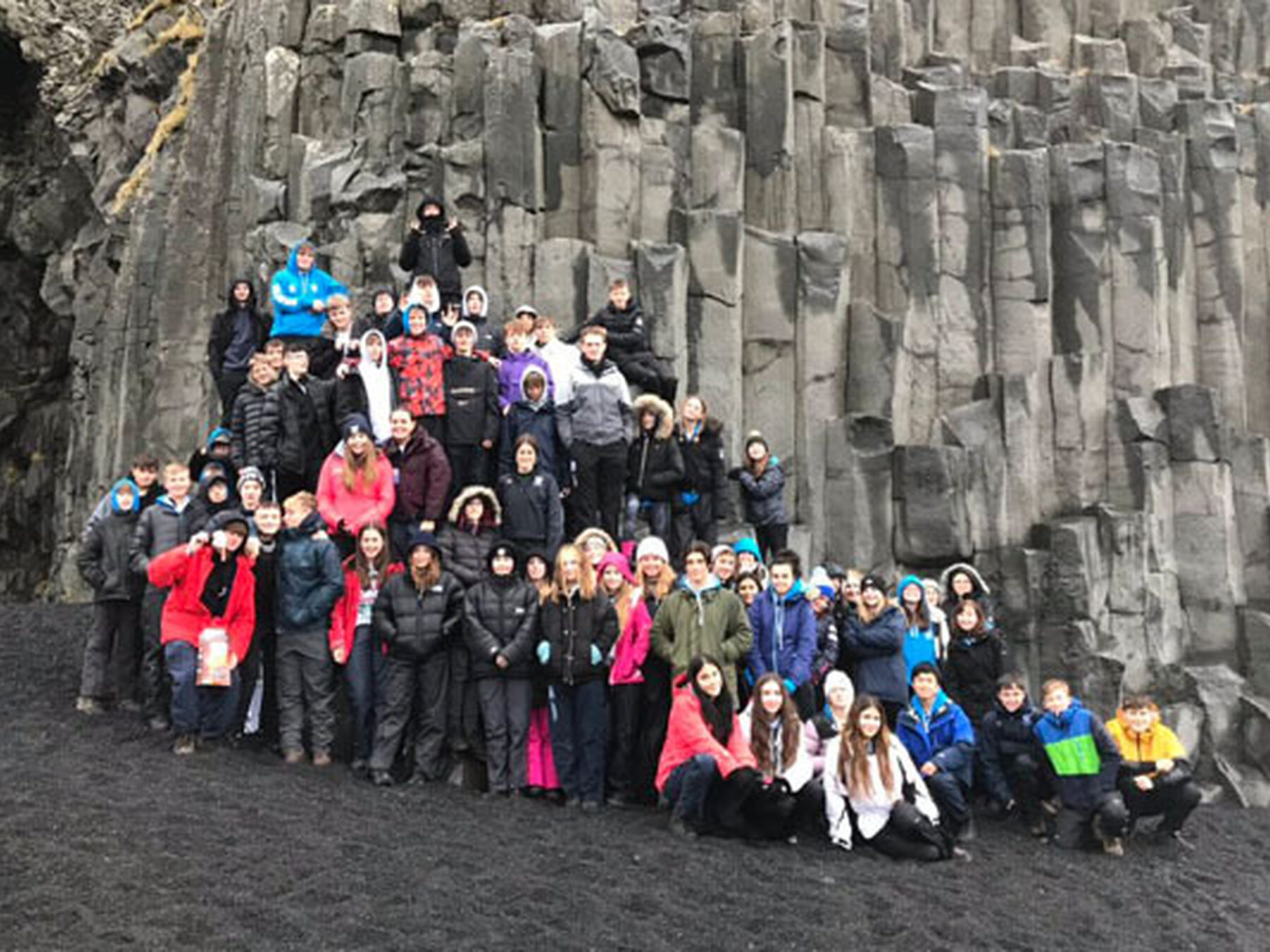
Sixty-six Stamford Endowed Schools students from Year 11 have travelled to Iceland for a five-day trip to experience its natural geographical spectacles. This is the fourth year that students from Stamford have experienced the trip, to witness the ‘real-life’ context of their GCSE topics including tectonics, the impact of climate change upon glaciers, coastal landforms and much more.The group’s main bases were the capital city of Reykjavik and the town of Hella. The latter sits just west of the Mýrdalsjökull glacier, on the shores of the River Ytri Rangá, and offered the opportunity to study glacial systems and landscapes as well as water and carbon cycles.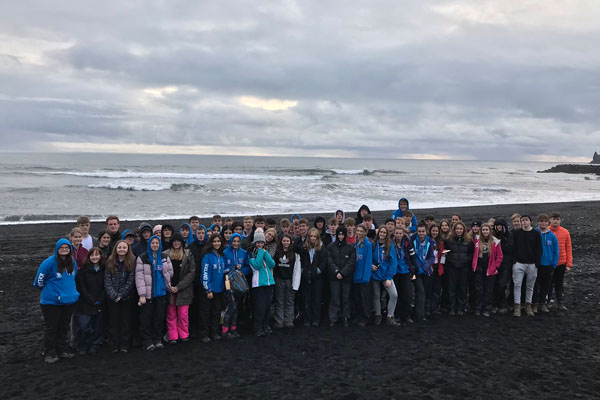
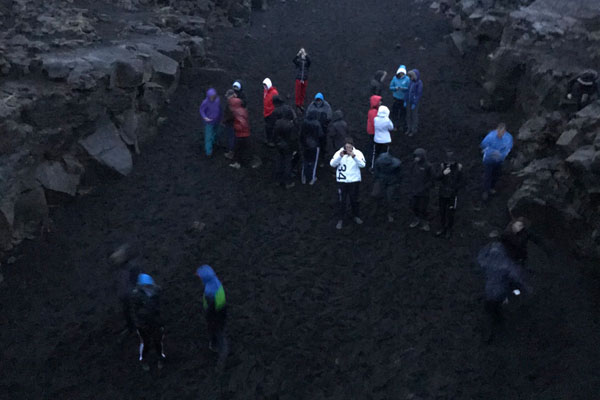 Following a day of travel, the second day of the trip brought a visit to the Gunnuhver and Reykjanes Geothermal Power Station and bridge between continents. Students then relaxed within the warm, mineral-rich thermal waters of the Blue Lagoon, set amongst a landscape of black lava. The afternoon brought the Seltun Hot Springs, Reykjanesviti lighthouse, and views of the Valahnúkur mountain. The Perlan Water Tower Museum proved hugely insightful, with a highlight being the chilly tour of a man-made ice cave, at -17 degrees Celsius, which allowed pupils to experience the sounds, smells and sights inside glacial ice. This was followed with views of the sights of the city from a 360-degree observation deck. The end of the day was marked with a 4D multisensory virtual experience inside the ‘FlyOver Iceland Experience’, where students felt the feeling of flight inside a 20m spherical cinema.
Following a day of travel, the second day of the trip brought a visit to the Gunnuhver and Reykjanes Geothermal Power Station and bridge between continents. Students then relaxed within the warm, mineral-rich thermal waters of the Blue Lagoon, set amongst a landscape of black lava. The afternoon brought the Seltun Hot Springs, Reykjanesviti lighthouse, and views of the Valahnúkur mountain. The Perlan Water Tower Museum proved hugely insightful, with a highlight being the chilly tour of a man-made ice cave, at -17 degrees Celsius, which allowed pupils to experience the sounds, smells and sights inside glacial ice. This was followed with views of the sights of the city from a 360-degree observation deck. The end of the day was marked with a 4D multisensory virtual experience inside the ‘FlyOver Iceland Experience’, where students felt the feeling of flight inside a 20m spherical cinema.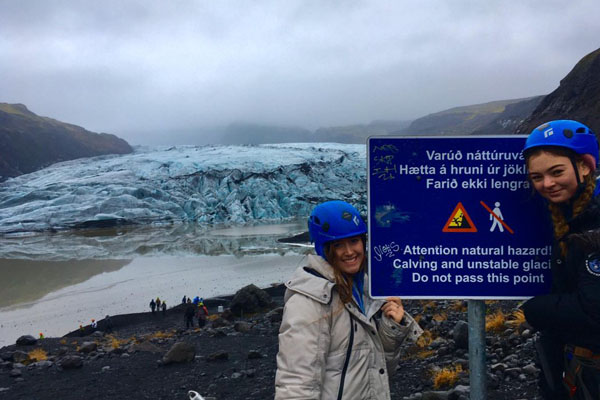
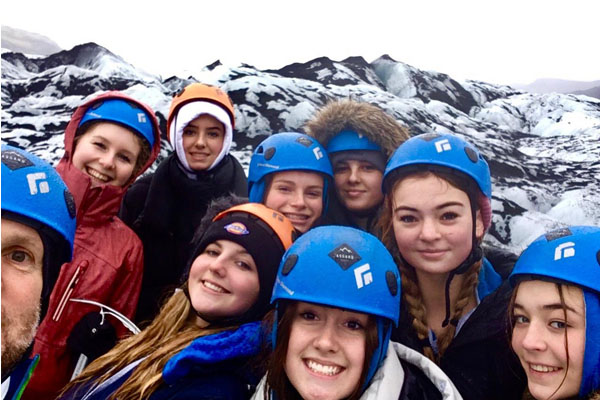
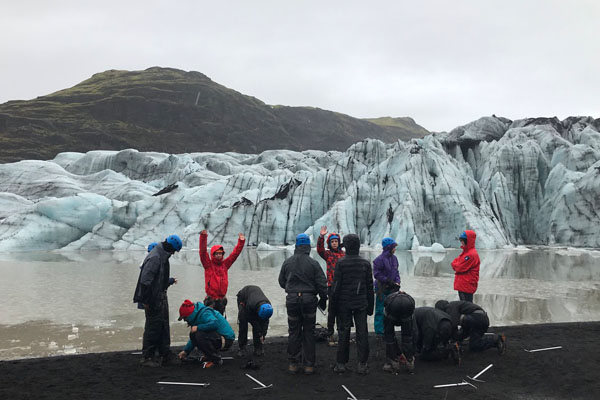 An early start on day three of the trip introduced students to the ‘Lava Centre’, a new facility dedicated to revealing the secrets of Iceland’s volcanoes. A drive past the Eyjafjallajökull flood plain took students to the Sólheimajökull glacier walk, where the impact of climate change was strikingly prominent. Following the knowledge of an experienced glacier guide, students learnt to use basic ice equipment, crampons and ice axes to traverse the natural ice sculptures and deep cravasses. After lunch, students enjoyed the coastal town of Vik, alongside a variety of waterfalls and beaches, lined by balsalt cliffs.
An early start on day three of the trip introduced students to the ‘Lava Centre’, a new facility dedicated to revealing the secrets of Iceland’s volcanoes. A drive past the Eyjafjallajökull flood plain took students to the Sólheimajökull glacier walk, where the impact of climate change was strikingly prominent. Following the knowledge of an experienced glacier guide, students learnt to use basic ice equipment, crampons and ice axes to traverse the natural ice sculptures and deep cravasses. After lunch, students enjoyed the coastal town of Vik, alongside a variety of waterfalls and beaches, lined by balsalt cliffs.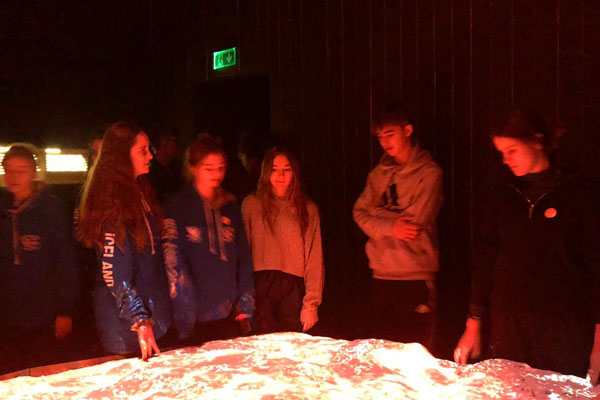
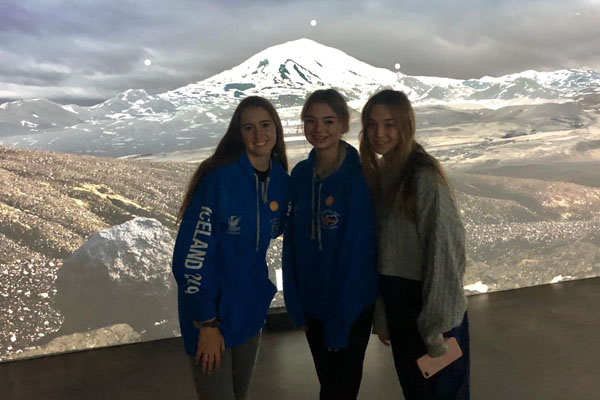 Day four of the trip provided a more relaxed start, with a trip to the Secret Lagoon; a natural hot spring and bathing pool in the small village of Fluoir, on the Golden Circle. The great Gullfoss double waterfall and walk between the continents in the Thingvellir national park then displayed to students where the first parliament of Iceland had been formed.
Day four of the trip provided a more relaxed start, with a trip to the Secret Lagoon; a natural hot spring and bathing pool in the small village of Fluoir, on the Golden Circle. The great Gullfoss double waterfall and walk between the continents in the Thingvellir national park then displayed to students where the first parliament of Iceland had been formed.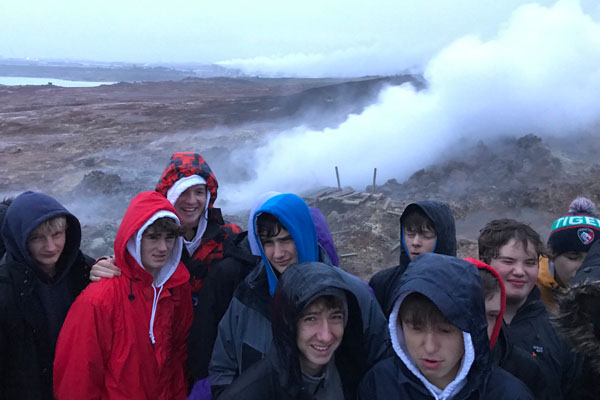 The final day of the geographical trip involved a walking tour of Reykjavik whereby students saw the impressive cathedral and city’s unique architecture.
The final day of the geographical trip involved a walking tour of Reykjavik whereby students saw the impressive cathedral and city’s unique architecture.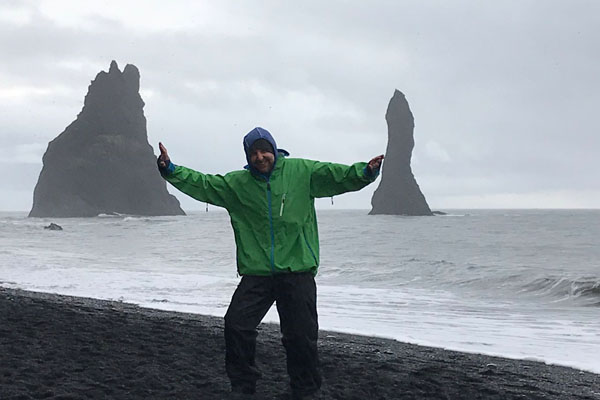 Commenting on the trip, Mr James Mitchell, Geography teacher at Stamford School, said: ‘All the students were fantastic on the trip and got to see the wonder of geography in action.’
Commenting on the trip, Mr James Mitchell, Geography teacher at Stamford School, said: ‘All the students were fantastic on the trip and got to see the wonder of geography in action.’

 Following a day of travel, the second day of the trip brought a visit to the Gunnuhver and Reykjanes Geothermal Power Station and bridge between continents. Students then relaxed within the warm, mineral-rich thermal waters of the Blue Lagoon, set amongst a landscape of black lava. The afternoon brought the Seltun Hot Springs, Reykjanesviti lighthouse, and views of the Valahnúkur mountain. The Perlan Water Tower Museum proved hugely insightful, with a highlight being the chilly tour of a man-made ice cave, at -17 degrees Celsius, which allowed pupils to experience the sounds, smells and sights inside glacial ice. This was followed with views of the sights of the city from a 360-degree observation deck. The end of the day was marked with a 4D multisensory virtual experience inside the ‘FlyOver Iceland Experience’, where students felt the feeling of flight inside a 20m spherical cinema.
Following a day of travel, the second day of the trip brought a visit to the Gunnuhver and Reykjanes Geothermal Power Station and bridge between continents. Students then relaxed within the warm, mineral-rich thermal waters of the Blue Lagoon, set amongst a landscape of black lava. The afternoon brought the Seltun Hot Springs, Reykjanesviti lighthouse, and views of the Valahnúkur mountain. The Perlan Water Tower Museum proved hugely insightful, with a highlight being the chilly tour of a man-made ice cave, at -17 degrees Celsius, which allowed pupils to experience the sounds, smells and sights inside glacial ice. This was followed with views of the sights of the city from a 360-degree observation deck. The end of the day was marked with a 4D multisensory virtual experience inside the ‘FlyOver Iceland Experience’, where students felt the feeling of flight inside a 20m spherical cinema.

 An early start on day three of the trip introduced students to the ‘Lava Centre’, a new facility dedicated to revealing the secrets of Iceland’s volcanoes. A drive past the Eyjafjallajökull flood plain took students to the Sólheimajökull glacier walk, where the impact of climate change was strikingly prominent. Following the knowledge of an experienced glacier guide, students learnt to use basic ice equipment, crampons and ice axes to traverse the natural ice sculptures and deep cravasses. After lunch, students enjoyed the coastal town of Vik, alongside a variety of waterfalls and beaches, lined by balsalt cliffs.
An early start on day three of the trip introduced students to the ‘Lava Centre’, a new facility dedicated to revealing the secrets of Iceland’s volcanoes. A drive past the Eyjafjallajökull flood plain took students to the Sólheimajökull glacier walk, where the impact of climate change was strikingly prominent. Following the knowledge of an experienced glacier guide, students learnt to use basic ice equipment, crampons and ice axes to traverse the natural ice sculptures and deep cravasses. After lunch, students enjoyed the coastal town of Vik, alongside a variety of waterfalls and beaches, lined by balsalt cliffs.
 Day four of the trip provided a more relaxed start, with a trip to the Secret Lagoon; a natural hot spring and bathing pool in the small village of Fluoir, on the Golden Circle. The great Gullfoss double waterfall and walk between the continents in the Thingvellir national park then displayed to students where the first parliament of Iceland had been formed.
Day four of the trip provided a more relaxed start, with a trip to the Secret Lagoon; a natural hot spring and bathing pool in the small village of Fluoir, on the Golden Circle. The great Gullfoss double waterfall and walk between the continents in the Thingvellir national park then displayed to students where the first parliament of Iceland had been formed. The final day of the geographical trip involved a walking tour of Reykjavik whereby students saw the impressive cathedral and city’s unique architecture.
The final day of the geographical trip involved a walking tour of Reykjavik whereby students saw the impressive cathedral and city’s unique architecture. Commenting on the trip, Mr James Mitchell, Geography teacher at Stamford School, said: ‘All the students were fantastic on the trip and got to see the wonder of geography in action.’
Commenting on the trip, Mr James Mitchell, Geography teacher at Stamford School, said: ‘All the students were fantastic on the trip and got to see the wonder of geography in action.’